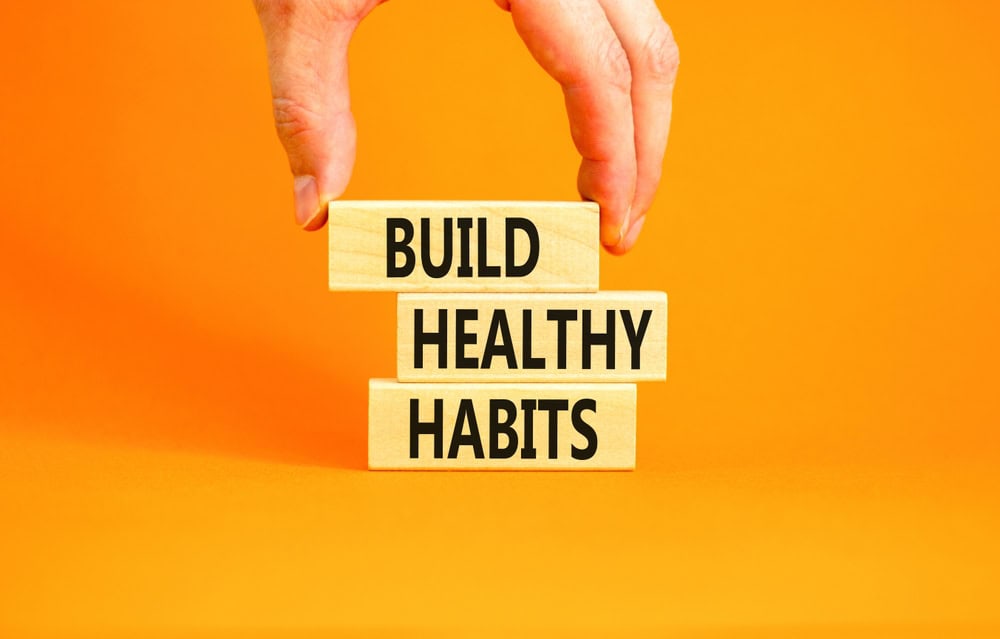
Raising children in a fast-paced world requires more than love and care; it requires positive habits for kids that will shape their future. A Good Habits for Kids Chart is a valuable tool for parents to help establish routines that foster life skills, responsibility, and discipline in children as they grow and develop throughout childhood.
Children thrive on consistency. Daily routines provide security, reduce anxiety, and teach time management. One way to achieve these goals is to include a good habits guideline or chart to create visual reminders. Once children see their instruction chart, they can easily remember the routines and may follow them on their own.
The Importance of a Good Habits Chart
 The chart serves as a guide for children by providing them with tangible references for abstract qualities such as responsibility, cleanliness, and punctuality. Children, especially younger children, respond better to visual cues, and because of this, a chart can help parents:
The chart serves as a guide for children by providing them with tangible references for abstract qualities such as responsibility, cleanliness, and punctuality. Children, especially younger children, respond better to visual cues, and because of this, a chart can help parents:
- Track progress daily
- Provide an incentive for kids through rewards and positive reinforcement
- Promote independence by allowing children to check off tasks on their own
When children can see their accomplishments visually, it reinforces desirable behavior and develops confidence. Good habits for children are eventually embraced as lifelong skills.
Life Skills to Include in a Good Habits Chart

It should be all about routines that build good life skills. Here are some categories to include:
1. Personal Hygiene Habits
Teaching personal hygiene is an important initial step in developing life skills. You could include in your chart:
– Brushing teeth two times per day
– Washing hands before meals
– Bathing daily
– Keeping fingernails clean
These tiny habits on a daily basis also help to establish self-care, responsibility, and consciousness of their health early on in childhood.
2. Healthy Eating & Nutrition
Eating habits are another important aspect of growth and learning for children. Consider including these habits on your chart:
– Eat fruits and vegetables daily
– Drink enough water
-Cleaning up after dinner
-Not eating unhealthy snacks
Teaching children to love making healthy food choices and being thankful is a way to build lifelong habits that support healthy well-being.
3. Organizational and School Skills
A Good Habits for Kids Chart should also be a part of reinforcing study habits and routines.
-Completing homework on time
-Keeping the desk or study area clean
-Reading every day
-Keeping the backpack and supplies organized.
These habits will help children focus and discipline themselves to manage time efficiently, which can help lead to academic success.
4. Social & Emotional Habits
Good habits are not only about the physical routines; social-emotional intelligence is also important. Include:
-Saying please and thank you
-Sharing with siblings and friends
-Talking about feelings politely
-Helping with small household chores
These habits will help children develop empathy, patience, and cooperation with or for others, all of which are important to build on later in life.
How to Use a Good Habits Chart Effectively?
Creating a Good Habits for Kids Chart is just the beginning. For it to be truly effective, you must consistently use the chart:
1. Keep it Simple
Do not try to incorporate too many habits at once. Introduce just a few at a time, especially age-appropriate routines that might spark interest and consistency.
2. Make it Visual and Colorful
Charts that are colorful and fun—have pictures, stickers, etc.—are more likely to engage the children. A Good Habits for Kids Chart is much more likely to engage children if it is visually appealing.
3. Include Them
Have children help to create or personalize the chart. When they feel ownership of the task, you will be more likely to have them follow the chart daily.
4. Praise and Positive Reinforcement.
Applaud when they complete tasks, use stickers or small rewards, and don’t use punishment for missed tasks. This is about creating habits, not creating anxiety or fear.
5. Follow it regularly.
Place the chart in a visible area, i.e., the bedroom or homework area, and check it daily. When possible, try to create consistency around checking the chart and its importance.
Age-Appropriate Good Habits Chart Ideas
For 3-5 year olds
- Brush teeth two times a day
- Return toys to their original spot
- Wash your hands before meals.
- Eat a fruit every day.
For 6-8 year olds
- Make your bed every day
- Complete homework each day
- Practice reading for 15 to 20 minutes
- Complete basic house chores
For 9-12 year olds
- Organize the bag and school books
- Discuss plans for homework and/or activities
- Follow a healthy sleep schedule
- Participate in family duties
Tips for Building Lifelong Habits
 A goal of the Good Habits for Kids Chart is to instill habits that will become second nature. Parents can help with this by:
A goal of the Good Habits for Kids Chart is to instill habits that will become second nature. Parents can help with this by:
-Modeling Good Habits: Children watch what adults do. Follow your good habits to promote them.
-Adding Responsibilities Gradually: This could begin with little things and add more as each child grows.
-Talking About the More Significant ‘Why’: Talk about why each habit is significant, so children can know that the actual world is not just the rule.
-Celebrating our Progress: Celebrate the consistency of the habit itself or the effort to do it, Not the success of it.
These combined ideas can transform your Good Habits for Kids Chart into a robust mechanism for building independence, responsibility, and life skills.
Benefits of a Good Habits for Kids Chart
- Routines: Children become accustomed to completing daily habits/routines without needing prompting.
- Independence: Kids gradually take ownership of their tasks and responsibilities.
- Confidence: Visual progress helps foster a sense of accomplishment and pride.
- Life Skills: Whether it is for hygiene practices, educational studies, or time management, habits establish thinking and living skills for eventual adulthood.
- Parent-Child Relationships: Having kids involved in developing the chart increases cooperation and understanding.
Final Takeaway
A Good Habits for Kids Chart is more than a simple list of instructions—it’s something that enables the development of life skills, discipline, and independence in children. By including routines for hygiene, nutrition, studying, and social behavior, parents can aid children in developing habits that last a lifetime.
Consistency, positive reinforcement, and personalization are foundational components of making the chart effective. Whether you use a paper chart or a digital version, the goal is identical: to aid in the children’s learning good habits that prepare them for responsible and productive lives.
Get started on developing good habits for your kids today, and allow your kids to take some ownership of their routines, build their own confidence, and develop life skills that will serve them throughout their lives.
FAQs
What is a Good Habits for Kids Chart?
A Good Habits for Kids Chart is a visual aid that helps kids develop the discipline of daily routines, gaining life skills, in a way that is fun and engaging.
How can a Good Habits for Kids Chart help my child?
A Kids Chart helps kids develop consistent, independent habits of responsibility while also working on hygiene, nutrition, study habits, and social skills.
What habits should I include in a Good Habits for Kids Chart?
You can include personal hygiene, healthy eating, study habits, chores, and basic social-emotional habits. You can create a chart that is appropriate for your child’s age and developmental stage.
At what age can I start a Good Habits for Kids Chart?
A chart can start with simple habits, with kids as young as 3-5 years old. The charts can be modified and adjusted as your child continues to grow, getting more formal with greater routines as they reach age 6-12.
How do I make a Good Habits for Kids Chart effective?
Use visuals, stickers, and rewards; engage your child in creating it; keep it consistent; and celebrate their work. Reinforce positivity to create long-lasting life skills.
(The article is written by Deepa Sarkar, Medical Writer, and reviewed by Monalisa Deka, Senior Health Content Editor)